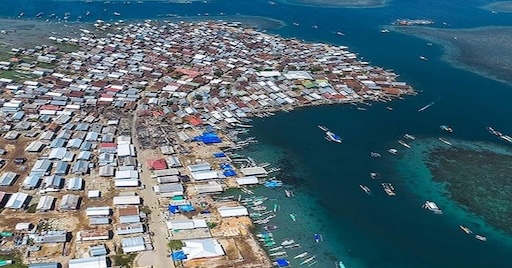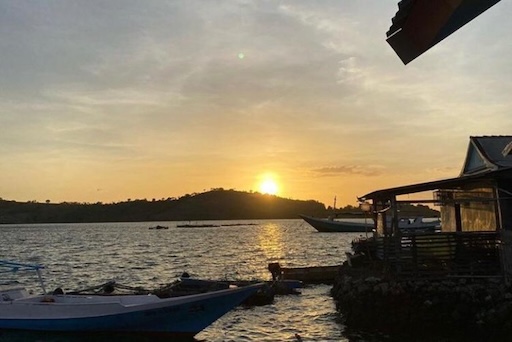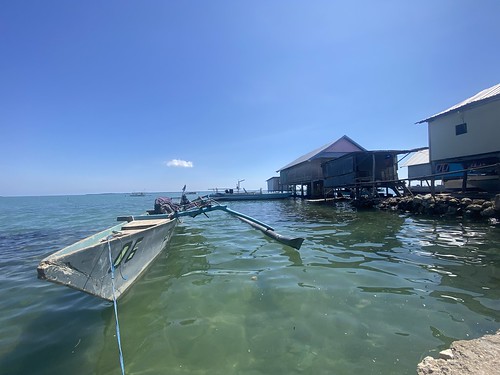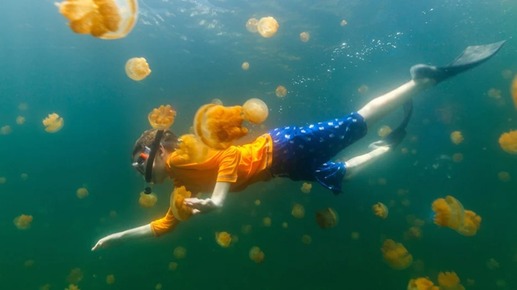Pulau Bungin – The Densest Island on Earth?
Sumbawa, West Nusa Tenggara, Indonesia

At first glance, it doesn’t even look real.
From above, Pulau Bungin resembles a jigsaw puzzle of rooftops tightly packed into the sea. No trees. No open fields. Just houses—hundreds of them—squeezed together so tightly that even alleyways feel like afterthoughts. Welcome to one of the most densely populated islands in the world, hiding quietly in the lesser-traveled waters of Indonesia.
While cities like Tokyo and Dhaka get all the attention, Pulau Bungin is in a league of its own. Just 8.5 hectares wide (that’s smaller than 12 football fields), it’s home to over 3,000 people—all living on a patch of coral that, technically, shouldn’t even be livable.
But it is. And it’s thriving, in its own beautifully strange way.
Built by Hand, on Coral
Pulau Bungin wasn’t always this big—or even this populated. A couple hundred years ago, it was just a small clump of sand and coral off the coast of Sumbawa. Then came the Suku Bajo, a sea-faring people often referred to as the “gypsies of the sea.”
They built stilt houses over the coral, gradually expanding the island using crushed coral and seashells, transported piece by piece from the ocean floor. Generation after generation, they grew their home—not by reclaiming land like the Dutch or pouring concrete like the modern world—but by handcrafting an island.
A Village Without Gaps
There are no front yards here. No space for gardens or playgrounds. Chickens run along rooftops, and children play in the narrow gaps between homes. Motorbikes squeeze through footpaths barely wider than a doorframe.
It’s chaotic. It’s compact. And somehow—it works.
The houses are made of wood, coral, and later, bricks and cement. They sit so close together that one could (and often does) hop from roof to roof. Clotheslines stretch from one house to the next like webbing. The entire island feels like one tightly woven structure—less like a neighborhood, more like a single extended home.

Life by the Sea, Literally
The sea is not a distant horizon here—it’s the backyard, the front porch, and the grocery store. Fishing is still the lifeblood of Bungin’s people. Early in the morning, you’ll see small boats heading out into the calm waters, returning by noon with nets full of fresh catch—snapper, grouper, squid.
At low tide, you can walk from the island to the mainland via a narrow causeway. At high tide, the sea creeps up to the doorsteps. This is a place where the rhythm of life moves with the tides.
The Stats: Densest Island on Earth?
The claim of being “the densest island in the world” isn’t just folklore—it’s backed by some jaw-dropping numbers:
- Area: ~8.5 hectares
- Population: ~3,000+
- Population Density: Roughly 35,000+ people per km²
Compare that to Manhattan (about 27,000/km²), and you start to understand just how densely populated Bungin truly is. And yet, while Manhattan has skyscrapers and underground systems, Bungin makes it all work horizontally—no high-rises, no multi-storey buildings.
What to Know Before You Go
- Access: Best reached via the town of Alas in Sumbawa. From there, take a boat or cross by land during low tide.
- Be respectful: It’s a tight-knit community. Ask before taking photos.
- No hotels: Visitors usually stay on the mainland.
- Bring essentials: Water, snacks, sunscreen.
- Open mind: It’s not designed for tourists—it’s designed for survival.

Why It Belongs on Your Hidden Wonder List
- Visually bizarre and architecturally mind-boggling.
- A rare look at how people adapt to extreme conditions.
- No tourism frills—just a real, lived-in marvel.
- You’ll walk away with perspective, awe, and questions.
🏝 Still think your apartment is small? Wait until you see Pulau Bungin.
Share this story and inspire others.
Tags: Pulau Bungin, world's densest island, Sumbawa travel, West Nusa Tenggara, Bajo people, coral island, micro-urban living, Indonesian fishing village, offbeat destinations, extreme population density, Chasing Hidden Wonder
 Hudoq Dance – Spirit Masks and Agricultural Rituals of the Dayak Bahau
Hudoq Dance – Spirit Masks and Agricultural Rituals of the Dayak Bahau
 Desa Trunyan – Where the Dead Rest in the Open (and Don’t Smell)
Desa Trunyan – Where the Dead Rest in the Open (and Don’t Smell)
 Lake Kakaban – The Jellyfish Lake That Doesn’t Sting
Lake Kakaban – The Jellyfish Lake That Doesn’t Sting
 Manajah Antang Ritual – Bird Spirits and Ancestral Messages in South Kalimantan
Manajah Antang Ritual – Bird Spirits and Ancestral Messages in South Kalimantan
 Harau Valley – Indonesia’s Slice of Norway
Harau Valley – Indonesia’s Slice of Norway
 Tiwah Ceremony – Guiding Ancestral Spirits Among the Dayak Ngaju
Tiwah Ceremony – Guiding Ancestral Spirits Among the Dayak Ngaju